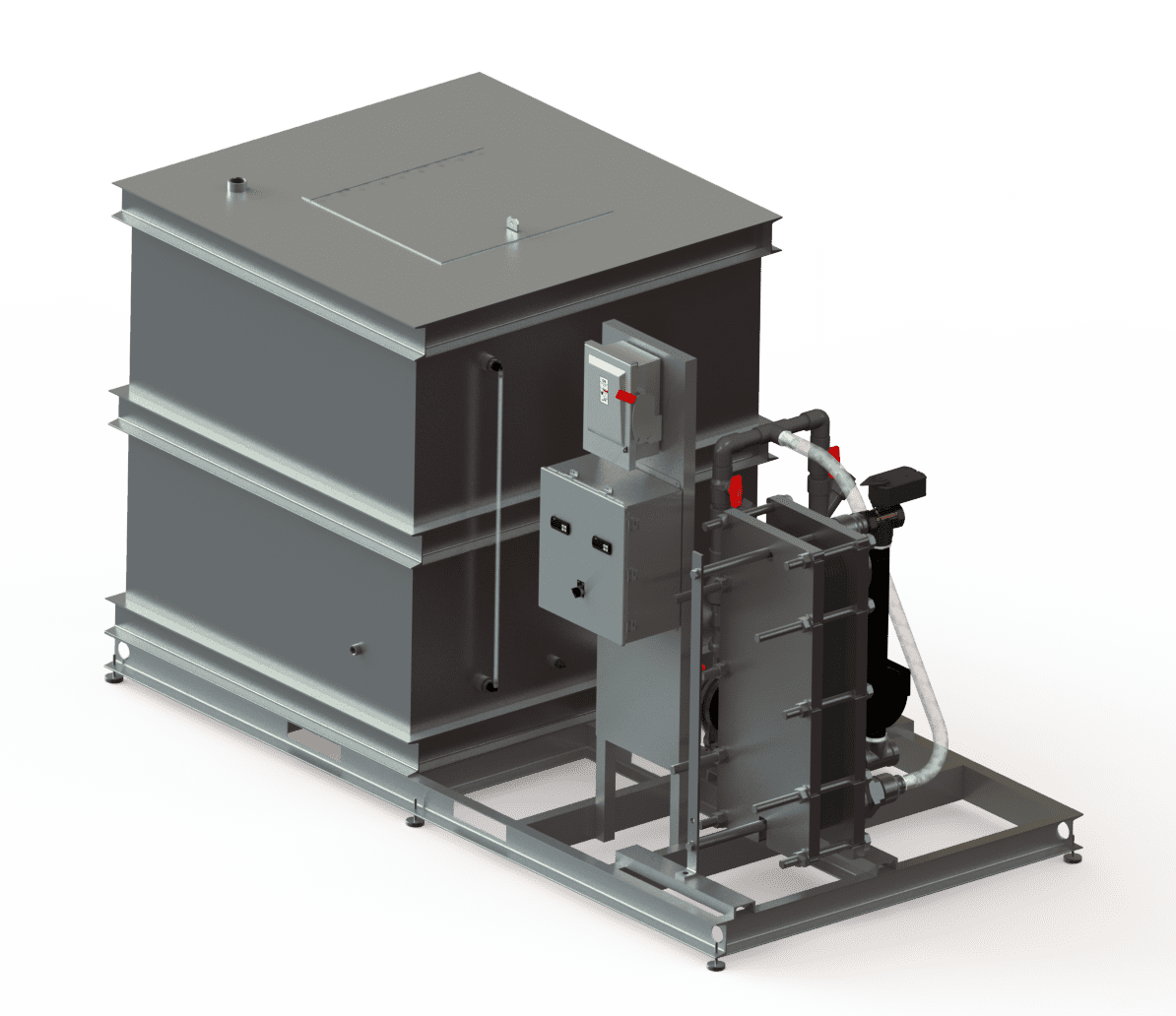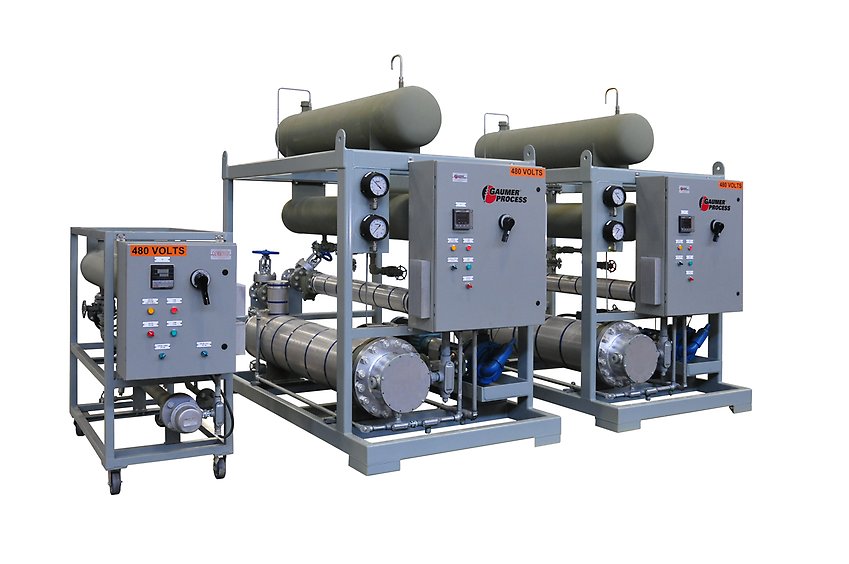Ways to Optimize Thermal Conductivity with DVS Heat Transfer Systems in Extreme Environments
Wiki Article
Innovations in Heat Transfer Solutions: What You Need to Know for Optimum Performance
Developments in Heat transfer systems are transforming efficiency throughout numerous industries. Advanced materials like graphene and nanofluids assure considerable renovations in thermal conductivity. At the same time, the assimilation of IoT and device discovering supplies opportunities for real-time tracking and boosted energy effectiveness. The landscape of thermal management is rapidly advancing. Recognizing these growths is important for accomplishing suitable system efficiency and sustainability in the future. What certain improvements are forming this transformation?Emerging Products for Boosted Heat Transfer

Advanced Heat Exchanger Layouts
While conventional Heat exchangers have actually offered their objective in numerous applications, progressed layouts are currently emerging to satisfy the boosting demands for performance and efficiency. These cutting-edge layouts, such as plate, shell-and-tube, and finned-tube Heat exchangers, include improved surface area locations and improved flow patterns to boost thermal transfer prices. Additionally, portable designs enable reduced area needs without jeopardizing efficiency. Advanced materials, such as compounds and corrosion-resistant alloys, additionally enhance resilience and efficiency under severe conditions. Simulation technologies and computational fluid dynamics are progressively utilized to fine-tune these layouts, making certain peak Heat transfer qualities. As industries seek to reduce power intake and maximize outcome, the fostering of sophisticated Heat exchanger designs is critical in achieving these objectives.The Function of Nanotechnology in Heat Transfer
Nanotechnology plays a necessary duty in enhancing thermal conductivity within Heat transfer systems. By adjusting products at the nanoscale, scientists have actually accomplished substantial enhancements in energy efficiency. These innovations not only optimize performance however likewise add to even more lasting power solutions.Improved Thermal Conductivity
Significant innovations in thermal conductivity have actually emerged through the application of nanotechnology, transforming Heat transfer systems throughout numerous markets. By integrating nanoparticles right into Heat transfer fluids and products, scientists have actually achieved amazing rises in thermal conductivity. These nanoparticles, such as carbon nanotubes, graphene, and steel oxides, boost the Heat transfer buildings as a result of their high area and special thermal attributes. The resulting compounds show improved performance in applications varying from electronic devices cooling systems to sustainable power technologies. The capability to tailor the size, shape, and make-up of nanoparticles permits for maximized thermal monitoring remedies. Therefore, nanotechnology proceeds to play a pivotal function in the advancement of more effective and effective Heat transfer systems, leading the way for improved commercial applications.
Power Effectiveness Improvements

Integration of IoT in Heat Transfer Solutions
The combination of IoT in Heat transfer systems introduces the execution of smart sensing units that enhance functional efficiency. These sensing units make it possible for real-time information monitoring, permitting immediate adjustments and optimizations. This technological innovation has the prospective to substantially boost efficiency and power management in Heat transfer applications.Smart Sensors Implementation
As Heat transfer systems advance, the combination of smart sensing units through the Net of Points More hints (IoT) has actually emerged as a transformative technique. These sensors allow real-time monitoring of pressure, flow, and temperature level rates, improving system performance and reliability. By collecting and transferring data, they help with proactive maintenance, decreasing the danger of system failings. In addition, wise sensing units add to power cost savings by refining operational specifications based on environmental problems. Their capability to assess anomalies and fads allows for notified decision-making, ensuring peak efficiency of Heat transfer systems. As markets increasingly adopt this technology, the execution of smart sensing units stands to reinvent how Heat transfer systems are handled, paving the method for better sustainability and enhanced efficiency outcomes.Real-Time Data Tracking
How can real-time data monitoring improve the efficiency of Heat transfer systems? By incorporating Internet of Points (IoT) modern technology, Heat transfer systems can utilize constant data collection from wise sensors. This real-time tracking enables for instant evaluation of temperature level, circulation, and stress prices, making it possible for drivers to recognize inadequacies promptly. Adjustments can be made to optimize performance, reduce energy consumption, and extend tools lifespan. Additionally, anticipating maintenance can be implemented, reducing unexpected downtime and expensive fixings. The capacity to envision performance metrics with control panels enhances decision-making, cultivating a proactive strategy to system monitoring. Inevitably, real-time data checking not only boosts functional efficiency but likewise contributes to sustainability objectives within industrial processes.Power Effectiveness and Sustainability Trends
Energy performance and sustainability patterns are improving the landscape of Heat transfer systems, driving technology and compliance throughout various markets. Organizations are increasingly focusing on energy-efficient styles to lower functional expenses and lessen ecological impacts. The integration of renewable resource sources is ending up being a lot more widespread, allowing Heat transfer systems to operate sustainably while satisfying governing needs. In addition, improvements in materials and innovations promote reduced energy usage and boost general efficiency. Lifecycle assessments are additionally obtaining grip, permitting firms to evaluate the environmental influence of Heat transfer systems from manufacturing to disposal. This emphasis on sustainability not just supports company duty however additionally positions companies competitively in a market where consumers significantly prefer green options. Consequently, power performance and sustainability remain vital considerations for future advancements in Heat transfer have a peek at this site technology.Developments in Thermal Monitoring Solutions
While the demand for efficient Heat transfer proceeds to climb, developments in thermal management remedies are emerging to attend to both performance and sustainability obstacles. Advanced materials, such as phase modification products and nanofluids, are being developed to enhance Heat transfer effectiveness - DVS Heat Transfer Systems. These products improve thermal conductivity and permit better temperature regulation in different applications. Additionally, modern technologies like energetic thermal control systems are obtaining grip, making it possible for real-time changes to take care of have a peek at this site Heat circulation efficiently. These systems add to energy cost savings and minimize the environmental impact of thermal processes. Furthermore, the integration of IoT in thermal monitoring helps with monitoring and predictive upkeep, ensuring maximized efficiency and durability of Heat transfer systems. Overall, these advancements represent considerable strides towards more lasting thermal monitoring techniquesFuture Instructions in Heat Transfer Innovation
Emerging advancements in thermal management services indicate an encouraging future for Heat transfer technology. Scientists are significantly concentrating on establishing materials with exceptional thermal conductivity and boosted power performance. Advancements such as nanofluids, which contain suspended nanoparticles, use considerable renovations in Heat transfer performance. Furthermore, the combination of smart products that adjust to varying temperature problems is acquiring grip, permitting even more efficient and receptive systems. The rise of additive manufacturing strategies is likewise making it possible for the design of intricate Heat exchanger geometries that optimize fluid flow. The implementation of maker discovering formulas is expected to revolutionize the optimization of Heat transfer systems, promoting predictive maintenance and performance improvement. Jointly, these innovations are positioned to change the landscape of Heat transfer innovations in different industries.
Regularly Asked Inquiries

Just how Do I Select the Right Heat Transfer System for My Application?
Selecting the appropriate Heat transfer system involves evaluating application requirements, consisting of temperature ranges, fluid buildings, and effectiveness needs. Assessing system types, maintenance considerations, and cost-effectiveness likewise plays an essential duty in making an educated decision.What Are the Upkeep Demands for Advanced Heat Exchangers?
Maintenance requirements for advanced Heat exchangers normally include regular examinations, keeping an eye on for leakages, cleaning of surface areas, and assuring perfect flow prices. Complying with maker standards guarantees efficient operation and extends the equipment's life expectancy.
Just How Do Ecological Elements Affect Heat Transfer Effectiveness?
Environmental factors considerably affect Heat transfer effectiveness. Variants in moisture, temperature, and air flow effect thermal conductivity and convective Heat transfer, eventually impacting system efficiency and demanding factor to consider during the design and procedure of Heat transfer systems.What Safety Criteria Relate To Heat Transfer Systems?
Security standards for Heat transfer systems generally include standards from companies such as ASME and ASTM. DVS Heat Transfer Systems. These criteria address materials, design, and functional methods to guarantee integrity, effectiveness, and defense versus hazards in numerous applications
How Can I Troubleshoot Usual Heat Transfer System Issues?
Fixing usual Heat transfer system problems includes checking for leaks, making sure proper liquid circulation, examining insulation stability, and validating temperature differentials. Recognizing these aspects can aid preserve system performance and avoid further difficulties.Nanotechnology plays a necessary role in boosting thermal conductivity within Heat transfer systems. Substantial developments in thermal conductivity have actually emerged with the application of nanotechnology, reinventing Heat transfer systems across numerous sectors. Developments in thermal conductivity with nanotechnology have actually paved the method for amazing enhancements in energy performance within Heat transfer systems. Energy effectiveness and sustainability patterns are reshaping the landscape of Heat transfer systems, driving technology and compliance throughout different sectors. The combination of IoT in thermal administration assists in monitoring and anticipating upkeep, ensuring optimized efficiency and long life of Heat transfer systems.
Report this wiki page